by Cansu Pişkin
With its imposing physical structure, the gigantic Istanbul Courthouse is hardly conducive to dispensing justice; more than that, it hardly facilitates one’s ability to defend oneself or report on events that occur inside.
How do I know you’re a journalist?” If you don’t work for a mass media organization as a crime reporter, it’s a question you’re bound to face. The chain of events that I will tell you about took place at the Istanbul Courthouse in Çağlayan on the European side of the city.
The courthouse is a 343,000-square-meter complex consisting of 18 buildings, the tallest of which is 19 floors high and the shortest of which is four. There are 296 courts, 37 bailiffs’ offices and three bankruptcy offices inside. On average, 160,000 people pass through this building every week. Security for the massive building is maintained by a 350-person team, which was brought under the auspices of the Justice Ministry on April 2, 2018.
With its imposing physical structure, this gigantic building is hardly conducive to dispensing justice; more than that, it hardly facilitates one’s ability to defend oneself or report on events that occur inside.
Here, we have to prove that we are journalists.
Members of the mass media, who can easily acquire the government’s yellow press card, can also obtain a personnel staff card for the building if they apply for it. Thanks to this card, they face no difficulties in entering the building or hearings.
But not all reporters can enjoy this “comfort;” many of us, by contrast, are only allowed in to follow the stories after putting up a vehement struggle at the security gate. I am one of those reporters.
Similar to suspects who try to prove that they are not guilty, we have to prove to security that we are journalists if we want to enter the building. Of course, everyone has something to say about this situation.
“Disgrace”
It’s 25 December 2017… We are at the fifth hearing of a case opened by the Istanbul 27th Court of Serious Crimes against Cumhuriyet newspaper over its publishing policies. The hearing room is overcrowded due to the large number of viewers. Chief judge Abdurrahman Orkun Dağ decides on a two-hour break to prepare for the arrival of witnesses, only for the hearing to continue when arrested journalist Ahmet Şık says he wants to make statements during the break time. Before Şık begins his statements, Dağ warns him, saying, “I will end your defense if you stray from your defense.”
“This trial is a political lynch trial. Thus, I will make a political assessment,” Şık says. Soon after, Dağ interrupts him, saying: “I cannot let it continue like this. There is a probe here. You have nothing to do with the government.”
In Turkish, the word “sen” is like the familiar French “tu,” while “siz” means “vous” and refers to either a familiar plural, or a formal singular.
Choosing to address Şık as “sen,” Dağ draws a reaction from the viewers in the hearing room. “You have to call him ‘siz,’” says one viewer. ‘You cannot call him ‘sen.’ He is not your buddy. You have to show respect,” shouts the crowd. Şık continues his speech.
Dağ once again interrupts the journalist as the latter continues his criticism of the government. “This is not a defense. You should go and get elected as a lawmaker to criticize AKP rule. This is not a political trial. I cannot let you present such a defense.” The viewers, who witness not only a historic case but a big injustice, start grumbling: “Disgrace.”
The directive
After the hearing goes to a break amid the shouts of “disgrace,” we as a group decide not to leave the door to the hearing room out of concern that we might not make it back in. Then come the security guards, who tell us to leave the corridor and go behind the barrier. Despite our efforts to avoid doing so, we soon find ourselves behind the barrier, waiting for the hearing to resume. Within minutes, the crowd behind us grows, pushing us into the barrier. We soon see a commotion at the door to the hearing room, signaling that the hearing is about to start. The security guards call out to the crowd behind the barrier: “Only non-arrested suspects, relatives of the arrestees, lawyers and journalists with yellow press cards will be allowed in.” Official press ID cards have never been required before, and we ask why they’ve suddenly become mandatory now. The answer is clear: “It is the chief judge’s directive.” We believe that the court that has violated our colleague’s right to a defense is now seeking to hinder our journalistic activities.
Resistance
My colleague Elif Akgül is in front of me, Canan Coşkun is behind me, while Yasin Kobulan stands at the back. Elif shows her yellow card and enters. I cannot because my card is not yellow enough. The security officials — people who have seen me for years — don’t let me in because I don’t hold that press card. I start explaining that my application for the card has not been answered yet, that I am a journalist, that I have been following stories at the courthouse for years and that they are well-aware that I am a reporter. The security chief soon enters the fray and questions my journalism, asking “How do I know you’re a journalist?” Elif from the other side of the barrier and Canan from behind me come to my defense. I finally pass through the turnstile, but this time, security guards build a wall around me. A few of them physically push me to the other side of the barrier. But what lucky resistance, because that push takes me, Canan and Elif to the other side. Now, we start resisting to ensure Yasin gets through. He, however, is not as lucky as us. However hard we try, we cannot bring him over to our side of the barrier.
Press barred, security guards allowed
It is December 2017. We are at the courthouse for the individual trials of Academics for Peace who have been charged with conducting propaganda on behalf of a terrorist organization. With a group of journalists, we stand in front of the security barrier, trying to talk ourselves inside. One of our colleagues, who wants to take a photograph of the crowd behind the barrier, is prevented by Adem Altunışık of the Akdeniz Security Company, who says it is forbidden to take photos at the courthouse and in the corridors.
When we tell him that there is no such restriction, we get that familiar response: “These are the directives.”
As he fails to show a written directive, we keep taking photos, but this time, we face hardships trying to get into the hearing room. However, we manage to pass this hurdle and start running to the hearing room, adding “another lucky resistance” feather to our cap.
At the end of the day, we “stalk” the social media photographs of security guard Altuntaş. We just want to better know the security guard, who appears to have dedicated himself to ensuring we can’t cover this trial. Before long, we find what we are looking for: A photograph in the courthouse corridor that shows Altuntaş arm in arm with crime gang leader Sedat Peker, who vowed to bathe in the blood of the Academics for Peace. Altuntaş apparently did not hesitate to violate the directive that he forced us to obey, and even shared the photograph on social media. Underneath the photo is the caption “The chief is here and he is welcome.”
Granting the security guards the right to do what is barred to the press is only one small example of how devoid of justice this courthouse is.
We can have no idea if the treatment we face is encouraged by the “nature” of the nightstick hanging from the waist of the security guards or the speeches from President Recep Tayyip Erdoğan, who targets us at every occasion. But we will keep showing up at all courthouses with our “glorious resistance” until we are able to wield our pens in freedom.
This article was published as part of “Stories of Justice,” a project supported by the Friedrich Naumann Foundation for Freedom.



